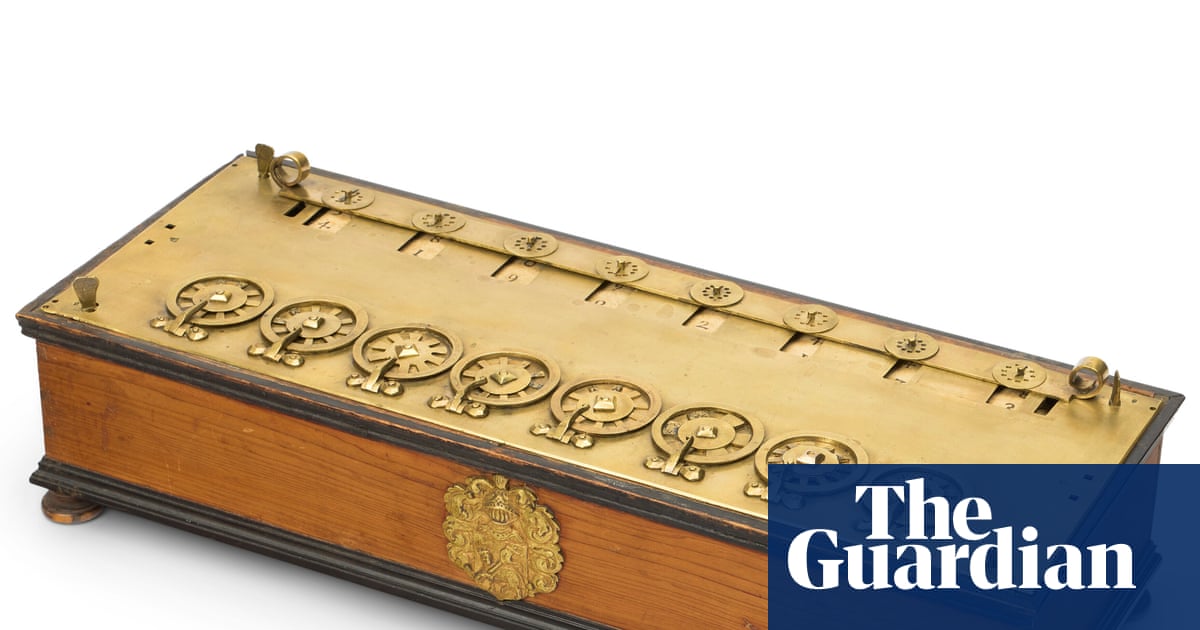A rare example of the first functioning calculating machine in history looks likely to stay in France after Christie’s withdrew it from auction pending a definitive ruling from a Paris court on whether or not it can be exported.
La Pascaline, developed by the French mathematician and inventor Blaise Pascal in 1642, when he was just 19, and billed as “the most important scientific instrument ever offered at auction”, had been expected to fetch more than €2m (£1.8m).
But the auction house withdrew the ebony-inlaid instrument from sale on Wednesday after the Paris administrative court, responding to an urgent appeal by scientists and researchers, provisionally suspended its authorisation for export late on Tuesday.
“Given its historical and scientific value, La Pascaline is likely to be classified as a ‘national treasure’ … which prevents the issuance of an export certificate,” the court said, adding its provisional decision “prohibits it from leaving the country”.
Christie’s said it was suspending the sale, part of an auction of the library of the late collector Léon Parcé, given the court’s decision, pending its final ruling – which could take several months – and “in accordance with the instructions of our client”.
The instrument, in private hands since 1942, is one of only eight authentic Pascalines in existence. Christie’s described the machines as “nothing less than the first attempt in history to substitute the work of a machine for that of the human mind”.
Pascal developed the instruments, the first attempt to “mechanise mental calculation”, to simplify the work of his father, who was in charge of a court tasked with restoring order to tax revenue collections in northern France, Christie’s said.
The philosopher devised several models, each using different units for a specific purpose, such as calculating decimals, commercial transactions or taxes. This one, for surveyors, calculates in units of measurement including feet, inches and fathoms.
The group of eminent scientists and researchers, including the 2021 Nobel physics laureate Giorgio Parisi, asked the administrative court last week to block La Pascaline’s potential export, arguing it should be classified a “national treasure” and remain in France.
La Pascaline was “the origin of modern computing” and had made France “the cradle of the computing adventure: a revolution that transformed our understanding of the world”, they said in an impassioned op-ed published by Le Monde.
It was “one of the key jewels in France’s intellectual and technological heritage”, they said, accusing the state of committing an “astounding blunder” in granting Christie’s export authorisation rather than giving French institutions time to mount a bid.
“What a sad admission of disinterest in our scientific heritage,” the scientists wrote. “What a misunderstanding of Pascal, engineer, mathematician, philosopher, writer, a personality like no other, whose 400th birth anniversary we celebrated in 2023.”
The fact that five Pascalines were already in French public collections – the other two are in Germany – did not diminish this one, they said, because all have their own characteristics and this one was little known to the scientific community.
“It is vital that it enter a public collection so that it can be studied,” they added, describing La Pascaline as “a shining symbol of a unique alliance of history, science and technology” that reflected “a philosophy of learning that honours France”.
The culture ministry said an export certificate had been issued last May following standard procedures, with two experts – one from the National Centre of Arts and Crafts and the other from the Louvre museum – approving the decision.
